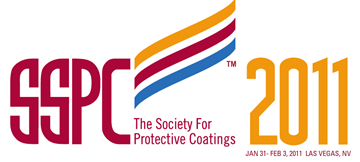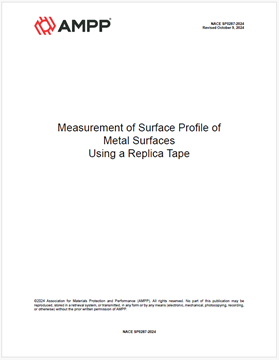Search
Products tagged with 'surface profile'
View as
Sort by
Display
per page
Further Advances In Paperless QA For Coatings Inspection
Product Number:
41211-604-SG
Publication Date:
2011
$20.00
How Have the Latest Instrument Developments Changed the Way We Measure Profile?
Product Number:
51219-173-SG
Publication Date:
2019
$20.00
Improvements to the Replica Tape Test Method (ASTM D4417C / NACE SP287 / ISO 8503-5)
Product Number:
51324-21157-SG
Publication Date:
2024
$40.00
Limpeza por Jateamento Abrasivo Úmido de Metal Branco
Product Number:
SSPC-SP 5 (WAB)-2015-NACE WAB-1-2015-Portuguese
Publication Date:
2015
$179.00
Major keys to Cost Effective Surface Preparation for Superior Coating Performance Corrosion Protection and Long Service Life
Product Number:
41209-505-SG
Publication Date:
2009
$20.00
Methods for the Measurement of Surface Profile in the Field
Product Number:
41210-538-SG
Publication Date:
2010
$20.00
Myth or Fact: Higher Surface Profile Increases Coating Adhesion
Product Number:
41216-969-SG
Publication Date:
2016
$20.00
NACE No. 6/SSPC-SP 13-2018, Surface Preparation of Concrete
Product Number:
21082-SG
Publication Date:
2018
$179.00
NACE SP0287-2024, Measurement of Surface Profile of Metal Surfaces Using a Replica Tape
Product Number:
NACE SP0287-2024
Publication Date:
2024
$109.00
NORMA CONJUNTA DE PREPARAÇÃO DE SUPERFÍCIES SSPC-SP 13/NACE No. 6 Preparação de Superfícies de Concreto
Product Number:
SSPC-SP 13-2018-NACE No. 6-2018-Portuguese
Publication Date:
2018
$179.00
Power Tool Cleaned Surfaces New Insights into Surface Profile Measurement
Product Number:
51218-166-SG
Publication Date:
2018
$20.00
Preparing Hot-Dip Galvanized Coating Surfaces for Painting
Product Number:
41215-908-SG
Publication Date:
2015
$20.00












